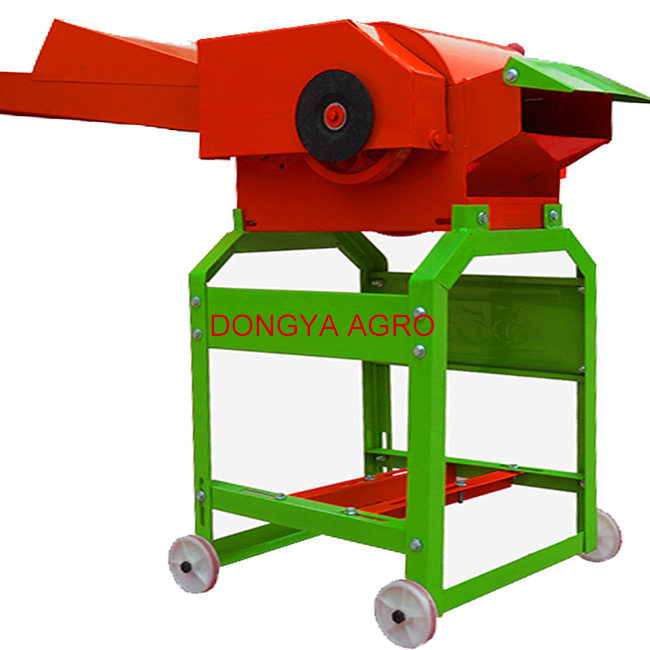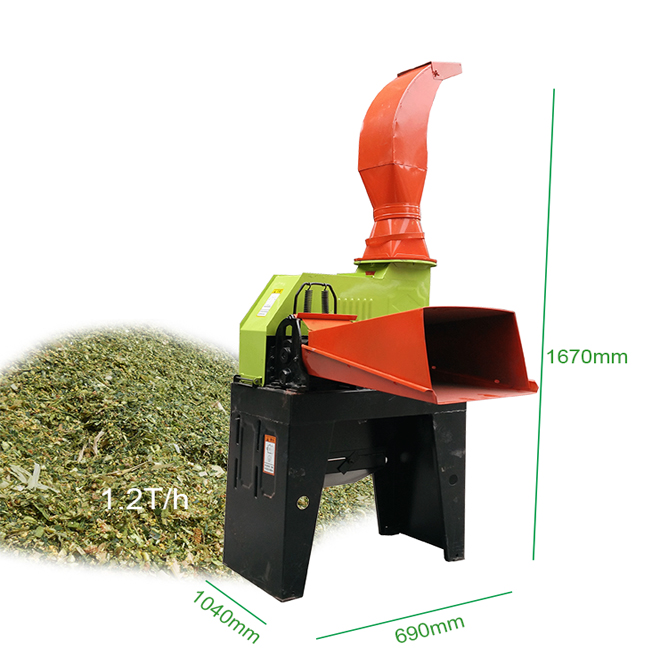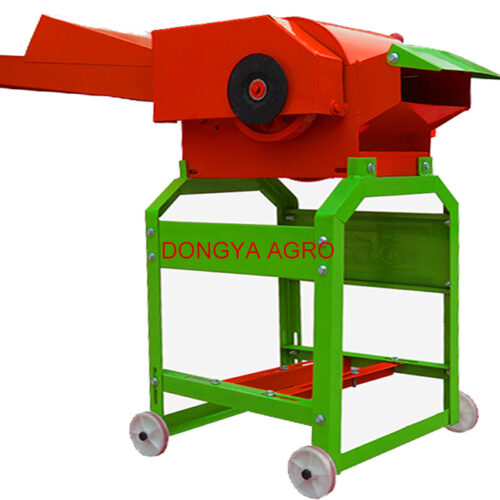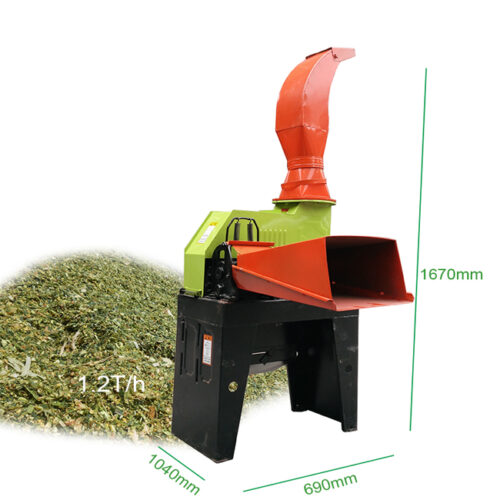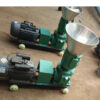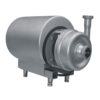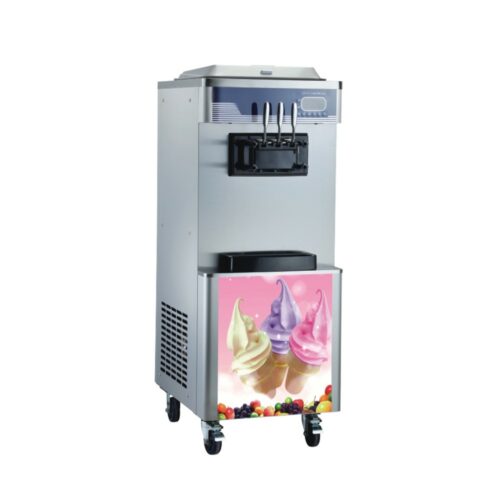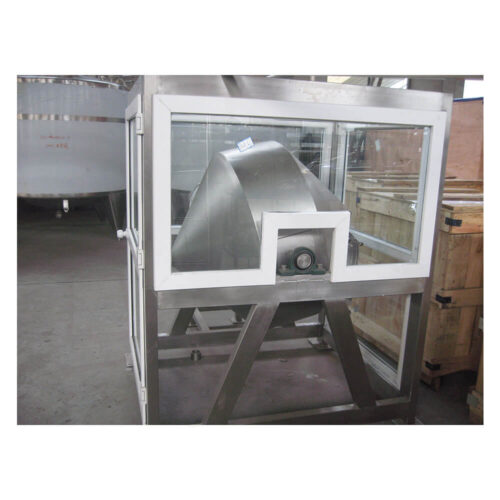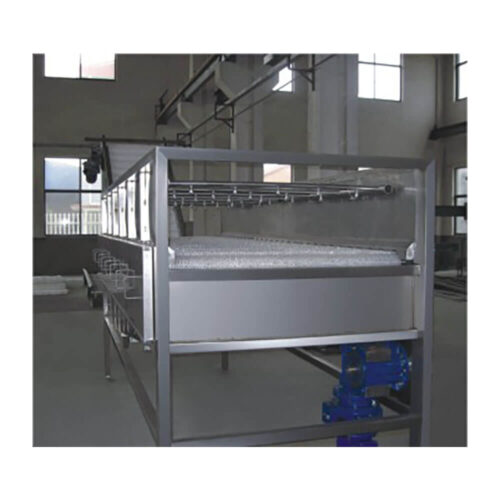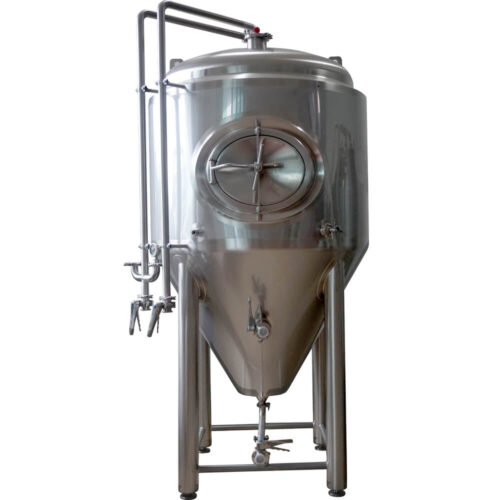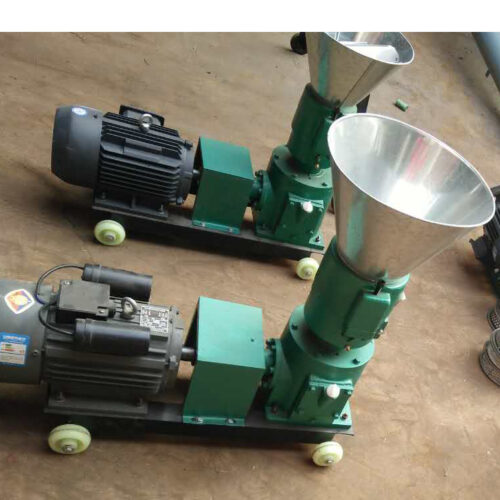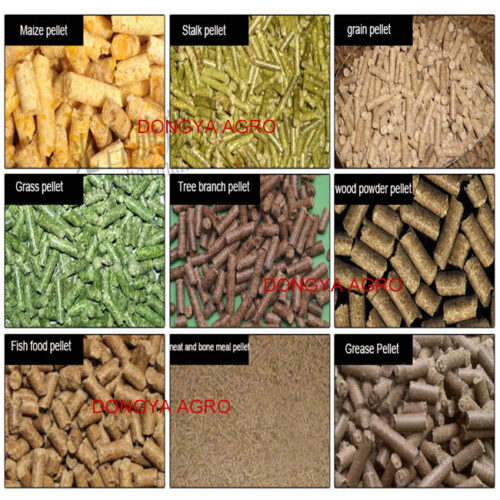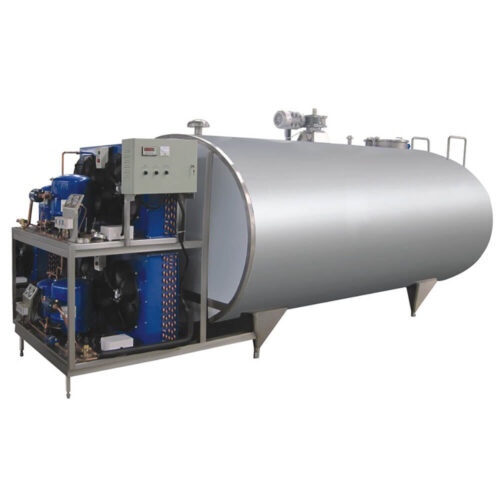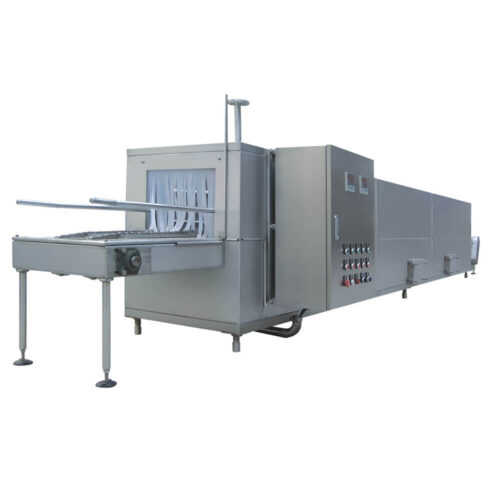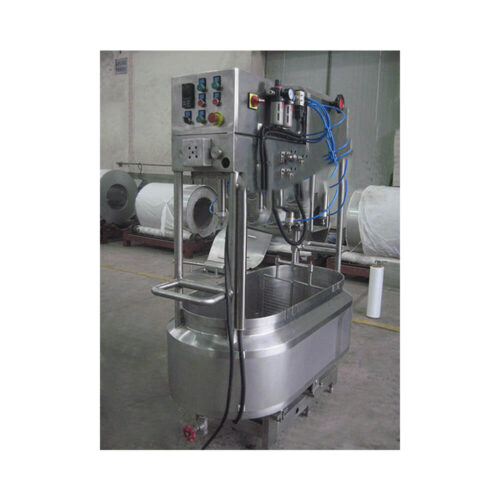Introduction to Chaff Cutters
Chaff cutters, often referred to as fodder or forage choppers, are machines designed to cut and process various agricultural products such as straw, hay, and silage into smaller, manageable sizes. These machines play a pivotal role in the agricultural sector, aiding farmers in preparing animal feed by converting bulky agricultural waste into high-density, nutritious fodder.
The significance of chaff cutters in agriculture cannot be overstated. With the increasing demand for dairy and meat products globally, there's a corresponding need for efficient and sustainable animal feed production. Chaff cutters provide a solution to this by allowing farmers to make the most of their agricultural waste, turning it into valuable feed for livestock.
Moreover, the use of chaff cutters has environmental benefits. Instead of burning agricultural residues, which contributes to air pollution, farmers can repurpose them into feed, thereby promoting sustainable farming practices. This not only reduces waste but also decreases the reliance on commercially produced animal feed, which can be expensive and may not always meet the nutritional needs of livestock.
In recent years, the chaff cutter industry has witnessed significant advancements. With the integration of modern technology, today's chaff cutters are more efficient, durable, and user-friendly. From manual hand-operated machines to fully automated electric models, there's a wide range of chaff cutters available in the market to cater to different needs.
China, being a major player in the manufacturing sector, has emerged as a leading supplier of chaff cutter machines. Companies like PkgMach.com and DONGYA AGRO have established themselves as reputable brands, offering custom solutions, competitive prices, and top-notch services to both domestic and international clients.
The Evolution of Chaff Cutter Machines
The journey of chaff cutter machines is a testament to human ingenuity and the relentless pursuit of agricultural efficiency. From rudimentary tools to sophisticated machinery, chaff cutters have come a long way, evolving in tandem with the needs of the farming community.
Historical Background
In ancient times, the task of cutting fodder was labor-intensive, often requiring manual tools like sickles and knives. The process was time-consuming, and the output was not always consistent in size and quality. However, as agriculture became more mechanized, there was a growing need for machines that could handle large volumes of fodder efficiently.
The first chaff cutters were simple mechanical devices operated by hand or animal power. They consisted of a set of rotating blades that cut the fodder as it was fed into the machine. These early machines were a significant improvement over manual methods, but they were still limited in terms of speed and capacity.
Modern Advancements and Features
With the advent of the industrial revolution and the development of steam and later, electric power, chaff cutters underwent a transformation. Modern machines are powered by electric motors or diesel engines, allowing for faster cutting speeds and higher productivity.
Today's chaff cutters come equipped with several advanced features:
- Adjustable Cutting Size: Modern machines allow users to adjust the size of the cut, ensuring the fodder is suitable for different types of livestock.
- Safety Mechanisms: Features like emergency stop buttons and protective guards ensure the safety of the operator.
- High-Quality Blades: Made from materials like No.65 Manganese steel, the blades of contemporary chaff cutters are durable and provide a clean cut.
- Versatility: Many of today's machines can handle both dry and wet fodder, making them suitable for various agricultural contexts.
China, with its robust manufacturing capabilities, has been at the forefront of these advancements. Companies like DONGYA AGRO have introduced models like the 6000KG cattle feed poultry feed cutter machine, which boasts high productivity and is suitable for both dry and wet fodder.
In conclusion, the evolution of chaff cutters mirrors the broader trends in agricultural machinery – a shift towards automation, efficiency, and sustainability. As the demands of modern agriculture continue to grow, one can expect further innovations in this domain, with China playing a pivotal role as a leading manufacturer and supplier.
PkgMach.com: A Leading Company in the Chaff Cutter Industry
In the vast landscape of agricultural machinery manufacturers, PkgMach.com stands out as a beacon of quality, innovation, and customer-centricity. With its roots in China, the company has carved a niche for itself in the global market, offering a diverse range of products and services tailored to the unique needs of its clientele.
Overview of PkgMach.com
PkgMach.com is not just a manufacturer; it's a brand synonymous with reliability. With a keen focus on research and development, the company has consistently introduced products that set industry standards. Their commitment to excellence is evident in every chaff cutter machine they produce, ensuring durability, efficiency, and optimal performance.
Services and Custom Solutions Offered
- Custom Manufacturing: Recognizing that every farm and agricultural enterprise has distinct needs, PkgMach.com offers custom manufacturing solutions. Whether it's a specific size requirement or a unique feature integration, the company's engineering team is equipped to deliver.
- After-Sales Support: PkgMach.com's relationship with its customers doesn't end with a sale. They offer comprehensive after-sales support, ensuring that every chaff cutter continues to operate at peak efficiency.
- Global Outreach: With a strong distribution network, PkgMach.com caters to clients worldwide. Their machines, bearing the mark of quality and innovation, are operational in farms across continents.
- Competitive Pricing: Leveraging the manufacturing prowess of China, PkgMach.com offers its products at competitive prices without compromising on quality. This ensures that customers get the best value for their investment.
Collaboration with Other Industry Leaders
PkgMach.com's prominence in the chaff cutter industry is further solidified by its collaborations with other industry leaders like DONGYA AGRO. Such partnerships allow the company to integrate the best features and technologies into their products, ensuring they remain at the forefront of innovation.
In conclusion, PkgMach.com's commitment to quality, innovation, and customer satisfaction makes it a preferred choice for many in the agricultural sector. Whether you're a small-scale farmer or a large agricultural enterprise, PkgMach.com has the right chaff cutter solution for you.
Types and Applications of Chaff Cutters
Chaff cutters, owing to their versatility and efficiency, have found applications in various sectors of the agricultural industry. Their primary function is to convert bulky agricultural waste into compact, nutritious fodder for livestock. However, their utility extends beyond this primary function. Let's delve into the different applications of chaff cutters:
1. Dairy Farming
- Feed Preparation: Chaff cutters are indispensable in dairy farms. They help in converting straw, hay, and other agricultural residues into finely chopped fodder, which is easier for cattle to digest. This ensures better milk yield and quality.
- Silage Making: Silage is fermented fodder, and its preparation requires chopping the green fodder into small pieces. Chaff cutters play a crucial role in this process, ensuring the fodder is of the right size for optimal fermentation.
2. Poultry Farming
- Feed Production: Poultry birds, such as chickens, require a balanced diet for healthy growth. Chaff cutters help in producing high-quality poultry feed by cutting grains, cereals, and other ingredients to a consistent size, ensuring better feed conversion ratios and healthier birds.
3. Horse Stables and Equestrian Centers
- Hay Preparation: For horse owners and equestrian centers, providing quality hay is crucial for the health and performance of the horses. Chaff cutters ensure the hay is of the right size, aiding in better digestion and nutrient absorption for the horses.
4. Sheep and Goat Farming
- Fodder Processing: Similar to dairy farming, chaff cutters help in preparing feed for sheep and goats, ensuring they receive nutritious and easily digestible fodder.
5. Biofuel and Biogas Production
- Raw Material Preparation: Agricultural waste, when processed through chaff cutters, can be used as raw material for producing biofuels and biogas. The finely chopped waste facilitates better fermentation and decomposition, leading to higher gas yields.
6. Organic Farming and Composting
- Compost Preparation: Chaff cutters can be used to chop agricultural waste into smaller pieces, which can then be added to compost pits. The smaller size ensures faster decomposition, leading to quicker compost maturation.
7. Mushroom Farming
- Substrate Preparation: In mushroom farming, substrates like straw are used for mushroom growth. Chaff cutters help in preparing these substrates by cutting them to the desired size, ensuring optimal mushroom yield.
8. Research and Educational Institutions
- Experimental Use: Chaff cutters are also used in agricultural research institutions and universities for experimental purposes, aiding in studies related to animal nutrition, feed conversion ratios, and more.
In essence, chaff cutters, with their diverse applications, play a pivotal role in modern agriculture. Whether it's enhancing livestock health, promoting sustainable farming practices, aiding in biofuel production, or facilitating research, these machines are at the heart of many agricultural processes.
Different Models and Their Specific Uses
- Manual Chaff Cutters: These are hand-operated machines, ideal for small farms or households. They are cost-effective and do not require electricity, making them suitable for remote areas.
- Electric Chaff Cutters: Powered by electricity, these machines offer higher efficiency and are suitable for medium to large farms. They can handle larger volumes of fodder and provide consistent output.
- Diesel-Powered Chaff Cutters: For areas where electricity is inconsistent, diesel-powered chaff cutters are a boon. They are robust, can handle vast volumes, and are ideal for commercial purposes.
- Advanced Models like DONGYA AGRO 6000KG: These are high-capacity machines designed for maximum efficiency. With features like adjustable cutting size and the ability to handle both dry and wet fodder, they are the top choice for large-scale operations.
Role of Chaff Cutters in Various Industries
- Dairy Farms: For dairy farmers, chaff cutters are essential. They help in producing nutritious fodder, ensuring better milk yield and quality.
- Poultry Farms: With the ability to cut various grains and cereals, chaff cutters aid in producing high-quality poultry feed, ensuring healthier birds.
- Horse Stables: For horse owners, providing quality hay is crucial. Chaff cutters ensure the hay is of the right size, aiding in better digestion for the horses.
- Biofuel Production: Agricultural waste, when processed through chaff cutters, can be used as raw material for producing biofuels.
Benefits of Using Chaff Cutters
- Waste Reduction: Instead of discarding agricultural waste, it can be converted into valuable animal feed.
- Cost Savings: By producing their own feed, farmers can save on the costs of purchasing commercial feed.
- Environmental Benefits: Repurposing agricultural waste reduces the need for burning it, leading to lower air pollution.
- Enhanced Livestock Health: Freshly cut and processed fodder is more nutritious, leading to healthier livestock.
In essence, chaff cutters, with their diverse range and functionalities, play a pivotal role in modern agriculture. Whether it's enhancing livestock health, promoting sustainable farming, or aiding in biofuel production, these machines are at the heart of many agricultural processes.
Production Process of Chaff Cutters
The production of chaff cutters is a meticulous process that involves precision engineering, quality materials, and stringent quality control measures. Let's delve into the intricate steps involved in the manufacturing of these essential agricultural machines.
1. Raw Materials Selection
- Metal Components: High-quality steel, especially No.65 Manganese steel, is used for crafting the blades, ensuring durability and a clean cut. Other metals are used for the body and structural components of the machine.
- Electrical Components: For electric chaff cutters, premium quality motors, wiring, and switches are sourced to ensure efficient and safe operation.
2. Design and Blueprint Creation
- CAD Designing: Modern chaff cutters are designed using Computer-Aided Design (CAD) software, ensuring precision and optimal functionality.
- Prototyping: Before mass production, prototypes are created to test the design and functionality of the chaff cutter.
3. Blade Manufacturing
- Forging: The selected steel is heated and forged into the desired shape of the blade.
- Tempering: To increase the hardness and durability of the blade, it undergoes a tempering process.
- Sharpening: The blade edges are then sharpened to ensure a clean and efficient cut.
4. Assembly
- Structural Assembly: The metal components are welded or bolted together to form the main structure of the chaff cutter.
- Motor Installation: For electric models, the motor is securely installed and connected to the main assembly.
- Blade Installation: The sharpened blades are then fitted into the machine, ensuring they align perfectly with the cutting mechanism.
5. Quality Assurance and Testing
- Operational Testing: Each chaff cutter undergoes operational tests to ensure it functions correctly and efficiently.
- Safety Checks: Safety mechanisms, such as emergency stop buttons and protective guards, are tested to ensure they work effectively.
- Electrical Testing: For electric models, electrical components are tested for safety and efficiency.
6. Packaging and Distribution
- Packaging: Once the chaff cutters pass all quality checks, they are packaged securely to prevent any damage during transportation.
- Distribution: The machines are then distributed to retailers, directly to customers, or exported to international markets.
7. After-Sales Support
- Installation Guidance: Manufacturers often provide guidance on installing and setting up the chaff cutter.
- Maintenance and Repair: After-sales support includes regular maintenance checks, provision of spare parts, and repair services to ensure the longevity of the machine.
In conclusion, the production of chaff cutters is a blend of modern technology, precision engineering, and a commitment to quality. Manufacturers like PkgMach.com and DONGYA AGRO ensure that each machine that rolls off their production line meets the highest standards of efficiency, safety, and durability.
Step-by-Step Guide to Using a Chaff Cutter Machine
Operating a chaff cutter machine efficiently and safely is crucial for optimal performance and longevity. Here's a comprehensive guide to help users navigate the process:
1. Installation and Setup
- Location Selection: Choose a flat and stable surface to place the chaff cutter. Ensure the location is free from moisture and is well-ventilated.
- Assembly: If the machine arrives disassembled, follow the manufacturer's instructions to assemble it correctly. Ensure all parts are securely fastened.
- Electrical Setup: For electric models, connect the machine to a power source. Ensure the voltage matches the machine's requirements.
2. Operational Guidelines
- Feed Input: Gradually feed the agricultural waste or fodder into the machine. Avoid overloading, as it can strain the motor and reduce efficiency.
- Adjustment: Many modern chaff cutters allow users to adjust the size of the cut. Set the desired size based on the type of livestock or application.
- Continuous Monitoring: While the machine is operational, continuously monitor its performance. Listen for any unusual sounds or vibrations, which could indicate a problem.
3. Safety Precautions
- Protective Gear: Always wear protective gear, such as gloves and safety goggles, to prevent injuries.
- Emergency Stop: Familiarize yourself with the machine's emergency stop button or mechanism. Use it immediately if you notice any issues or malfunctions.
- Keep Away from Children: Ensure that children and pets are kept away from the machine while it's operational.
- Avoid Loose Clothing: When operating the machine, avoid wearing loose clothing or jewelry that could get caught in the moving parts.
4. Maintenance and Cleaning
- Regular Cleaning: After each use, clean the machine to remove any residual fodder or waste. This prevents clogging and ensures efficient operation.
- Blade Sharpening: Over time, the blades may become dull. Regularly sharpen them to maintain optimal cutting performance.
- Lubrication: Periodically lubricate the moving parts of the machine to reduce friction and wear.
- Electrical Maintenance: For electric models, periodically check the wiring and connections for any signs of wear or damage.
5. Storage
- Clean Before Storing: Before storing the machine, ensure it's clean and free from any residual material.
- Dry Location: Store the chaff cutter in a dry location, away from direct sunlight and moisture, to prevent rusting or damage.
- Cover: Use a protective cover to shield the machine from dust and debris.
6. Troubleshooting
- Consult the Manual: If you encounter any issues, consult the machine's manual. It often contains troubleshooting tips and solutions for common problems.
- Seek Professional Help: If you're unable to resolve the issue, contact the manufacturer or a professional technician for assistance.
In essence, while chaff cutters are designed for efficiency and ease of use, proper operation and maintenance are crucial for their longevity and performance. By following the above guidelines, users can ensure they get the most out of their chaff cutter machine while maintaining safety and efficiency.
Key Questions International Buyers Should Ask Chinese Suppliers
Sourcing machinery, especially something as specialized as a chaff cutter, from international markets can be a daunting task. China, being a major hub for manufacturing, offers a plethora of options. However, to ensure that you're getting the best deal, both in terms of quality and cost, it's essential to ask the right questions. Here are some key inquiries international buyers should make when approaching Chinese suppliers:
1. Company Credentials and Experience
- How long have you been in the chaff cutter manufacturing business?
- Can you provide references or testimonials from previous international clients?
2. Product Specifications and Customization
- What are the technical specifications of the chaff cutters you offer?
- Do you offer customization options based on specific requirements?
3. Quality Assurance and Certifications
- What quality control measures do you have in place during the manufacturing process?
- Do your products come with any certifications, especially those recognized internationally?
4. After-Sales Support and Warranty
- What kind of after-sales support do you offer, especially for international clients?
- Do your chaff cutters come with a warranty? If so, what does it cover and for how long?
5. Pricing and Payment Terms
- What is the pricing structure for your chaff cutters? Are there discounts for bulk orders?
- What are your payment terms? Do you accept letters of credit or other secure payment methods?
6. Shipping and Logistics
- Do you handle shipping and logistics? If so, what are the associated costs?
- How do you ensure the machinery is securely packed to prevent damage during transit?
7. Spare Parts and Maintenance
- Do you provide spare parts for the chaff cutters? Are they readily available?
- Do you offer any training or guidelines on the maintenance and servicing of the machines?
8. Intellectual Property and Branding
- Is there an option for white-labeling or private labeling the chaff cutters for resale in other markets?
- How do you ensure the protection of intellectual property, especially for customized designs?
9. Lead Time and Production Capacity
- What is the lead time for production once an order is placed?
- What is your production capacity? Can you handle large orders within a stipulated timeframe?
10. Sample Availability
- Do you provide samples for testing before placing a bulk order? If so, what are the costs and terms associated with it?
In conclusion, while China offers competitive advantages in terms of cost and manufacturing capabilities, due diligence is essential. By asking the right questions, international buyers can ensure they're partnering with a reputable supplier, getting high-quality chaff cutters, and securing the best terms for their investment.
FAQ Tips: Understanding Chaff Cutters
Navigating the world of chaff cutters can be complex, especially for new buyers or users. This FAQ section aims to address common queries, providing clarity and insights into these essential agricultural machines.
1. What is the primary purpose of a chaff cutter?
- A chaff cutter is designed to cut and process various agricultural products like straw, hay, and silage into smaller, manageable sizes, primarily for animal feed.
2. How does an electric chaff cutter differ from a manual one?
- A manual chaff cutter is hand-operated and doesn't require electricity, making it suitable for small-scale operations or remote areas. An electric chaff cutter, powered by electricity, offers higher efficiency and is ideal for medium to large-scale operations.
3. What materials are used in the blades of chaff cutters?
- High-quality chaff cutters often use blades made from No.65 Manganese steel, ensuring durability and a clean, efficient cut.
4. How often should the blades of a chaff cutter be sharpened?
- The frequency of sharpening depends on usage. However, it's advisable to check the blades regularly for dullness and sharpen them as needed to maintain optimal performance.
5. Can chaff cutters handle both wet and dry fodder?
- While basic models might be designed for specific fodder types, advanced models, like the DONGYA AGRO 6000KG, can handle both wet and dry fodder.
6. What safety precautions should be taken when operating a chaff cutter?
- Always wear protective gear, avoid loose clothing, ensure the machine is stable, and be familiar with the emergency stop mechanism. Keep children and pets away from the operating area.
7. How does the quality of fodder from a chaff cutter compare to commercially available feed?
- Chaff cutters allow for fresh preparation of fodder, ensuring it's free from preservatives and additives. This often results in more nutritious feed compared to some commercially available options.
8. Are chaff cutters environmentally beneficial?
- Yes. Instead of burning agricultural residues, which contributes to air pollution, farmers can repurpose them into feed or other applications, promoting sustainable farming practices.
9. How do I choose the right chaff cutter for my needs?
- Consider factors like the scale of operation, type of fodder, power source availability, and budget. Engage with suppliers or manufacturers, like PkgMach.com, to get recommendations based on your specific requirements.
10. Are spare parts readily available for chaff cutters?
- Reputable manufacturers and suppliers usually provide spare parts and after-sales support. It's advisable to check the availability and terms of spare parts before making a purchase.
In conclusion, chaff cutters are invaluable tools in the agricultural sector, enhancing efficiency and sustainability. Whether you're a potential buyer, a user, or someone keen on understanding these machines, we hope this FAQ section provides the insights you're looking for.

